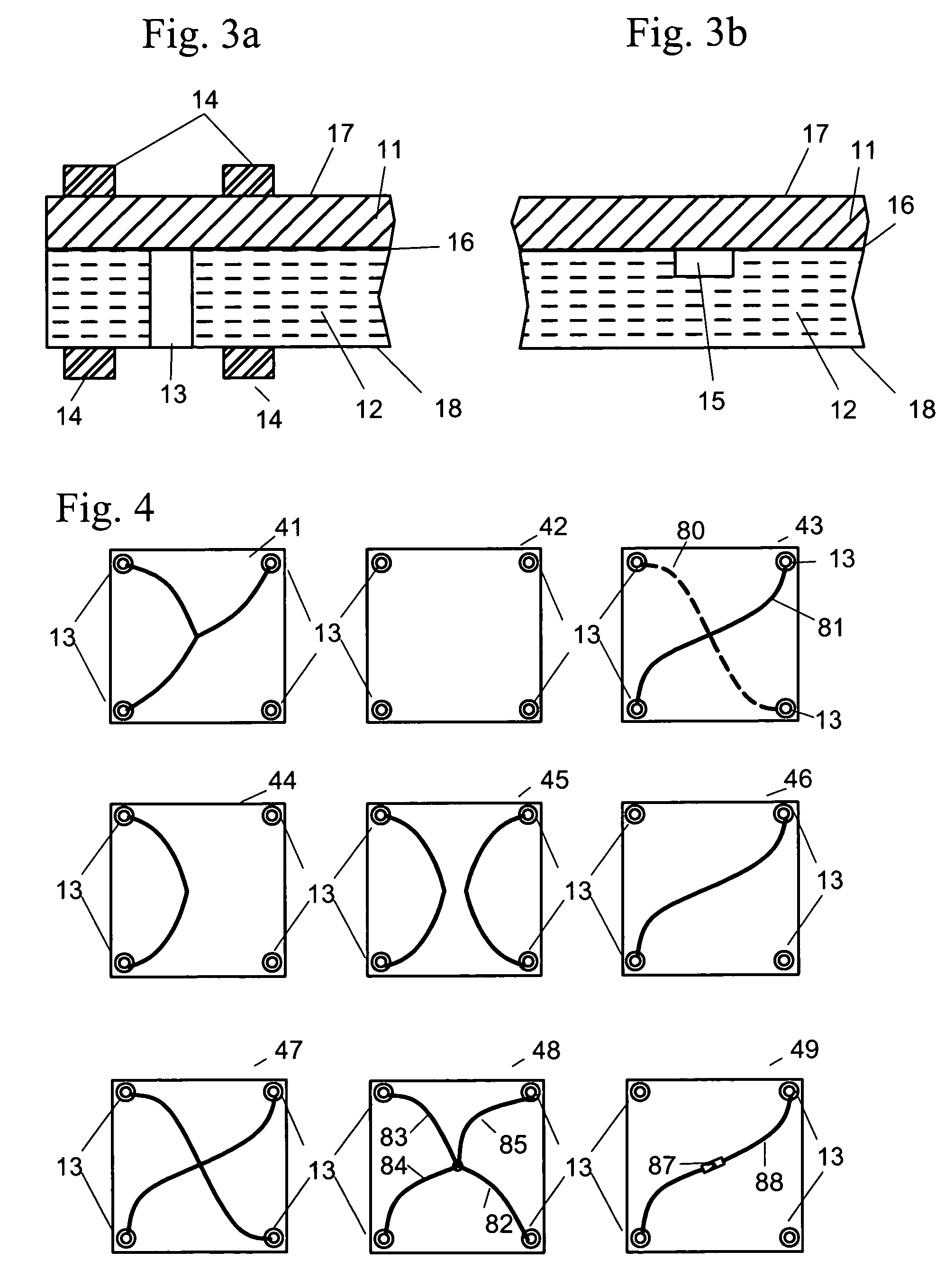Reconfigurable modular microfluidic system and method of fabrication
a microfluidic system and modular technology, applied in the field of microfluidic system miniaturization, can solve the problems of unmet challenges for microfluidic developers, inability to test each section of the system in isolation, and difficulty in developing high efficiency, and achieve the effect of enhancing the usability of the breadboard system and maximising the configuration efficiency
- Summary
- Abstract
- Description
- Claims
- Application Information
AI Technical Summary
Benefits of technology
Problems solved by technology
Method used
Image
Examples
Embodiment Construction
[0042]The present invention addresses the need for rapidly building an application specific microfluidic chemical analysis system from standardized components.
[0043]The system of the invention is constructed from a multiplicity of discrete modular microfluidic devices or “chips”, assembled on an alignment base (“breadboard”). The chips are standardized as to shape, size and thickness, allowing great flexibility in assembly of the chips as needed.
Module / Chip Structure
[0044]In one embodiment of the invention, the chips (microfluidic modules) are essentially square in layout, with a fluid passage or hole (fluid communication port) located at each corner of the chip, surrounded by a sealing feature. The square layout of the chip allows the chips to be arranged in a diagonal array, meaning only one corner of adjacent chips overlap. The diagonal array permitted by this arrangement of square chips and four corner holes gives the ability to branch the fluid path without making special provi...
PUM
| Property | Measurement | Unit |
|---|---|---|
| Length | aaaaa | aaaaa |
| Pressure | aaaaa | aaaaa |
| Shape | aaaaa | aaaaa |
Abstract
Description
Claims
Application Information
 Login to View More
Login to View More - R&D
- Intellectual Property
- Life Sciences
- Materials
- Tech Scout
- Unparalleled Data Quality
- Higher Quality Content
- 60% Fewer Hallucinations
Browse by: Latest US Patents, China's latest patents, Technical Efficacy Thesaurus, Application Domain, Technology Topic, Popular Technical Reports.
© 2025 PatSnap. All rights reserved.Legal|Privacy policy|Modern Slavery Act Transparency Statement|Sitemap|About US| Contact US: help@patsnap.com



